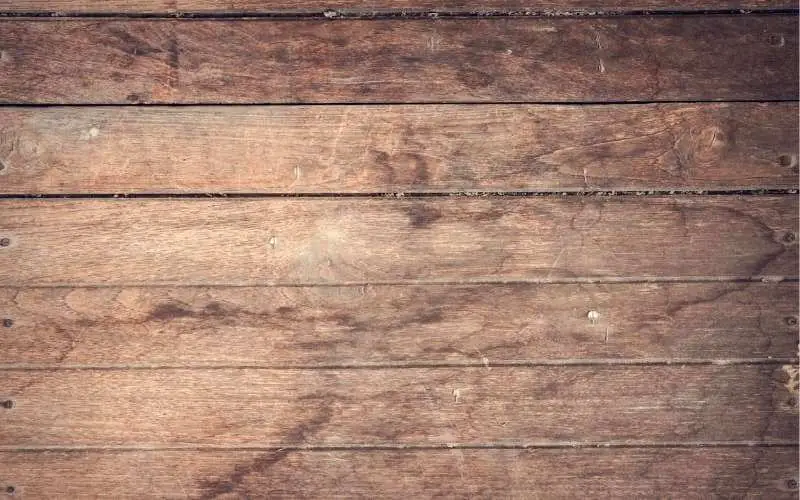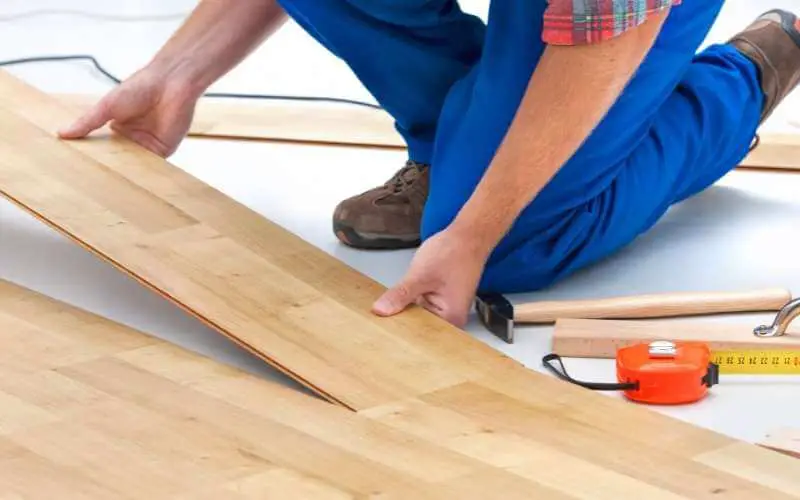Having to experience the problems of a sagging floor in your home is anything but pleasing. Sagging floors is one of the most reoccurring problems in a floating floor.
We will be outlining how to fix a sagging floor in an old house. To do that, you must first be on the lookout for sagging floors, then, examine your underfloor. Support your footings and posts, finally, install sister joists and girders.
Read on as we throw more light on fixing a sagging floor in an old house.
Related: How to Fix Bulging Floor Tiles
Causes of Sagging Floors
Table of Contents
This is a detailed list of the causes of sagging floors.
1. Moisture Problem
Moisture leaks can cause sagging floors in our home. So be on the lookout to know if your sagging floor is caused by moisture spills.
You can put an end to this issue by blocking the leaks from the exterior part. Then you have to dry out the crawl space. If you solve the moisture leaking then it solved the sagging of your floor.
2. Faulty Floor Support Structure Design
Another cause of sagging floors is the problem of poor structural support. It is even noted as the most popular cause of a sagging floor.
This happens when your floor joist begins to lean low. This is caused by the weight and pressure from the materials on top of it. Your floor would start sagging from the heavyweight.
The best way to remedy the sagging floor joist is by attaching new support structures like jacks. These jacks should be placed rightly and strategically. The placing of the jacks should solely be influenced by the amount of weight they should shoulder.
3. Settlement Weight
Another factor that causes sagging floors is the settlement weight. If what makes your floor is due to the settlement weight, you should consider installing many jacks to help put up with the weight of the heavy materials.
If the floor is sagging at an uncontrollable pace, you can consider bolstering the floor by using pushing piers to keep to ensure the foundation of your home is safe and sturdy enough.
Read: How to fix crowning hardwood floor
How to Inspect a Sagging Floor
Here are a few tips on how to inspect a sagging floor.
1. Check out the Support Beams
If your home is built on a basement, you would need to check the whole basement support beams and points where they join with the floor. Be on the lookout for wood posts positioned on silt floors.
This is because as they slowly decay and meld into the floor, this makes the home sit according to the pace of the decay, from the lowest point to the top.
To experiment how true it is, push a metal probe or screwdriver into the post on the floor. If the space is decayed, punky, or hollow, that may be the reason for the sagging floor.
2. Check Out the Floor Joist
You also have to be on the lookout for a floor joist that has been cut inappropriately to install a pipe or wiring. This might signify that the floor joist has diminished or broken down with time.
During construction most times, floor joists are giving little to no care at all, leading to some of these problems. This might have contributed to the sagging of the floor.
3. Check Out for Damages Caused by Insects and Moisture
Be on the lookout for damages caused by insects and moisture. If your basement is always damp be on the lookout for places with moisture and insect damage on the structures.
Insects like powder post beetles riddles your beams and joist with holes. While on the other hand, termites tend to leave mud tunnels on your posts and core.
To solve this problem, you have to repair your home and also work on your deteriorated structural parts. Your supporting posts should also not sit on silt floors, but rather, boost the concrete pads with pads that help circulate the workloads.
How to Fix a Sagging Floor in an Old House
Here are step-by-step tips on how to fix a sagging floor in an old house.
1. Lookout for the Sagging Floor
The first attempt at solving the issue of a sagging floor is by examining the cause. The causes of a sagging floor are not hard to trace but it doesn’t hurt to take some measures to source out more likely problems. The information you got after your inspection would help you know where to work on or places that need renovation.
Furthermore, you can make use of a carpenter’s level, positioned on a board, this would help checkout how serious the sag is. You can also use a small rolling ball on the surface and examine the location and momentum of the ball. If the ball is rolling at a high speed, it means the sag is quite enormous.
2. Underfloor Examination
Another requirement is to go underneath your floor and investigate from underneath. Check out for breakdowns that have a probability of appearing on the joist. To work on this problem, you would have to get temporal and adaptable columns to bolster the joist.
3. Footings and Post Support
You would have to form a block of concrete to support your joist and put them in place firmly. To make your concrete foundation stable, you have to dig 2 feet downwards and place your footing support pillar.
How deep and wide it would be should be solely influenced by the weight and pressure of the loads above. Be sure to level the grounds before you consider installing the support piers.
4. Install Girders and Sister Joists
You would have to install a brand new sister joist to aid the already existing beams and provide them with the strength required.
Read: How to Fix Loose Floorboards Under Carpet
Conclusion
With time floors tends to sag and this sight is anything but good to look at. Many factors can lead to a sagging floor. But not to worry we gave a detailed list of how to fix a sagging floor in an old house.

